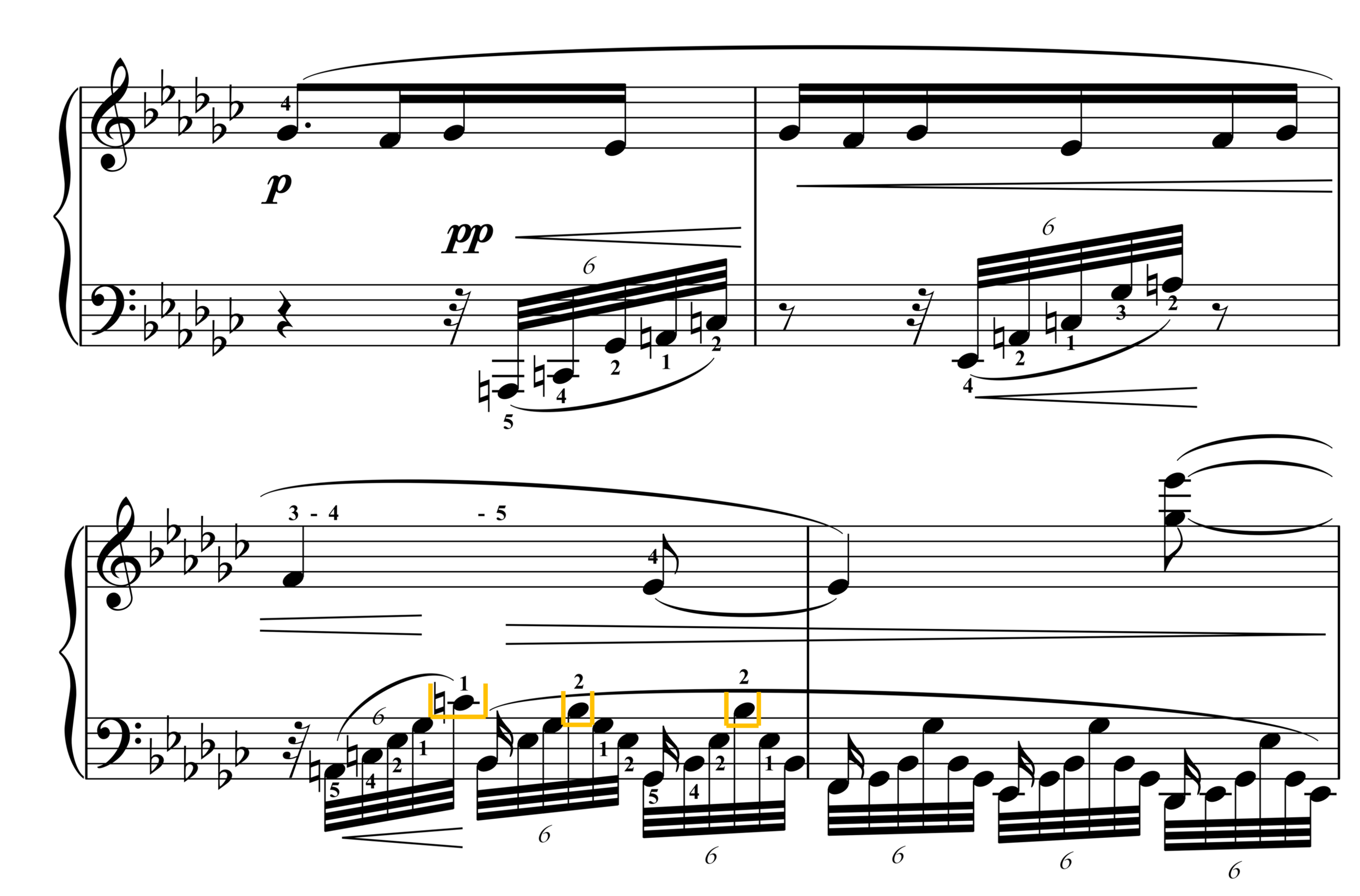“Taking the last note of the tenor line in the right hand frees the left hand for a smooth transition to its next position.”
Submitted by Michael Clark
Published on 1/1/2020

“Taking the last note of the tenor line in the right hand frees the left hand for a smooth transition to its next position.”
Submitted by Michael Clark
Published on 1/1/2020

“This distribution divides the triplets more evenly between the hands, eliminating finger crossing where possible.”
Submitted by Michael Clark
Published on 1/1/2020

“Taking one additional note in the right hand gives just enough time for a more secure left-hand leap.”
Submitted by Michael Clark
Published on 1/1/2020

“This redistribution is designed to achieve maximum legato.”
Submitted by Michael Clark
Published on 1/1/2020

“Taking the A as an octave with the right hand gives the left hand more time to shift to its new position.”
Submitted by Michael Clark
Published on 1/8/2022

“Taking some of the bottom notes of the treble staff into the left hand allows the right hand to remain in a more compact position.”
Submitted by Michael Clark
Published on 1/1/2020

“Stretching to the ninth might be uncomfortable for some. Taking the G-sharp in the right hand relieves the stretch and allows a legato connection.”
Submitted by Michael Clark
Published on 1/1/2020

“When possible, it’s nice to reduce the stretch in the left hand by grabbing the top note in the right.”
Submitted by Michael Clark
Published on 1/1/2020

“When possible, it’s nice to reduce the stretch in the left hand by grabbing the top note in the right.”
Submitted by Michael Clark
Published on 1/1/2020

“The top notes of this widely spaced accompaniment can be incorporated into the right hand.”
Submitted by Michael Clark with thanks to Jennifer Hayghe
Published on 1/1/2020

“Dividing these octaves between the hands facilitates legato without excessive pedal.”
Submitted by Michael Clark
Published on 1/1/2020
Original:

Suggested performance:

“I prefer to avoid thumbs crossing when possible. Exchanging the inner notes eliminates the crowding.”
Submitted by Michael Clark
Published on 1/1/2020
Original:

Suggested performance:

Submitted by Michael Lenahan
Published on 1/1/2020

“After the left-hand thumb plays the F feels like a natural place to switch to the right hand.”
Submitted by Michael Clark
Published on 1/1/2020

“This redistribution allows the tied notes to be held without crossing over the thumb or finger substitutions.”
Submitted by Michael Clark
Published on 1/1/2020

“The left hand is leaping anyway, so taking an extra note is not a big deal, and it frees the right up for an alternate fingering that better prepares for the following measure.”
Submitted by Michael Clark
Published on 1/1/2020

“The bottom notes of the treble staff naturally fall into left hand territory, facilitating an easier legato.”
Submitted by Michael Clark
Published on 1/1/2020

“I find it easier to take the last notes of these wide arpeggios in the right hand.”
Submitted by Michael Clark
Published on 1/1/2020